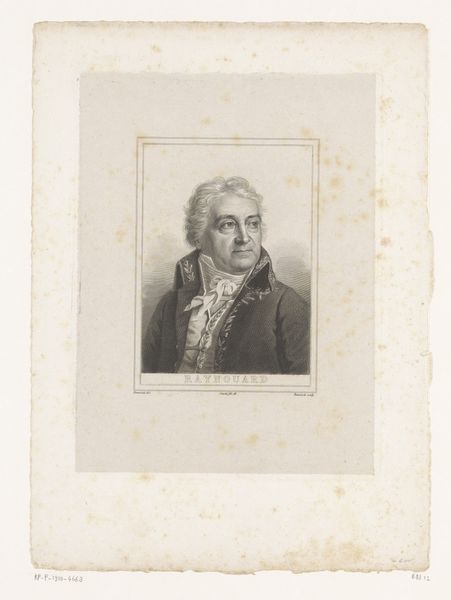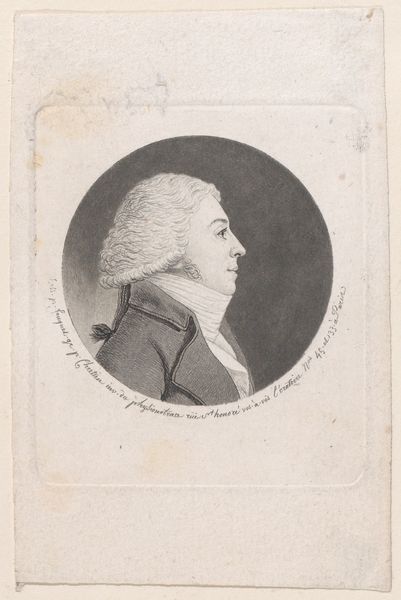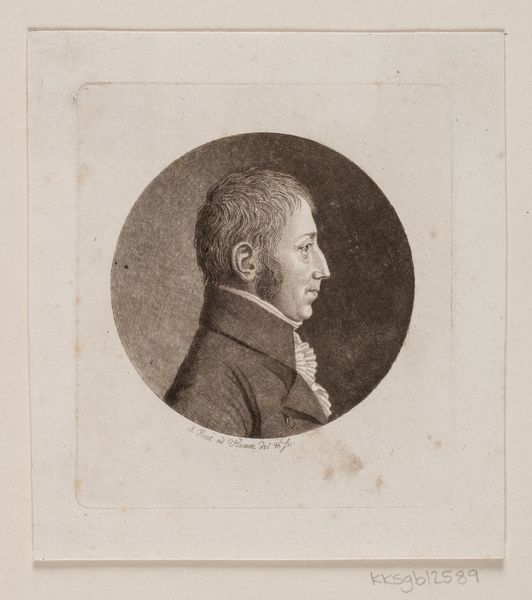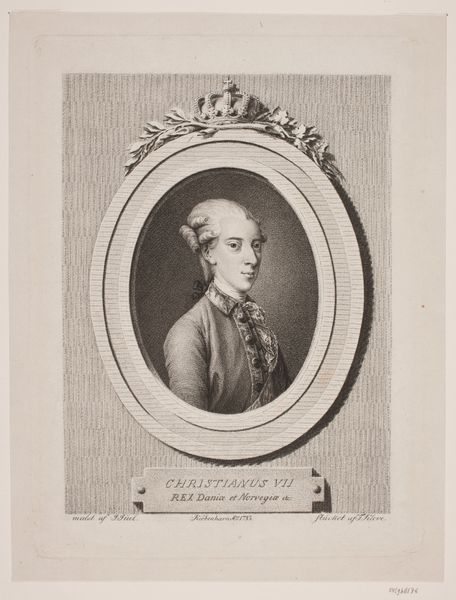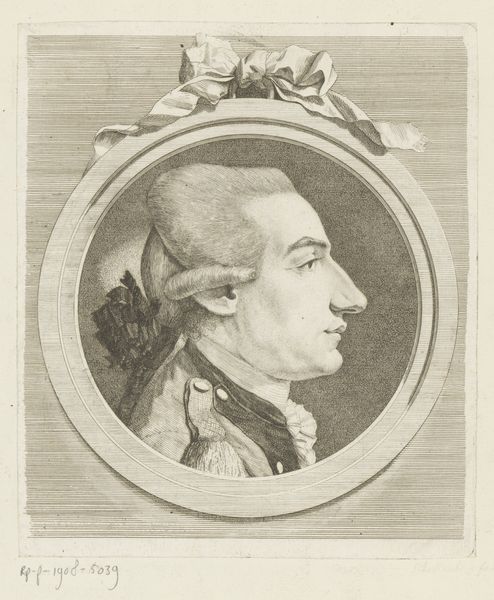
painting
#
portrait
#
neoclacissism
#
painting
#
academic-art
#
miniature
Dimensions: height 7 cm, width 5.3 cm, depth 0.5 cm
Copyright: Rijks Museum: Open Domain
Editor: This is "Portret van Herman Willem Daendels," made in 1792 by Petrus Groenia, currently held at the Rijksmuseum. It's a small, oval painting – almost like a locket. The subject's serious expression contrasts with the delicate, almost pastel-like, coloring. What do you see in this piece? Curator: Initially, I observe the dominance of line. Note how the artist meticulously renders the striped fabric of the sitter’s coat, creating a subtle interplay of verticality and contour. How does this linearity, also evident in the hair and facial structure, contribute to your understanding of the piece? Editor: I hadn’t thought about that specifically! The lines do create a sense of formality, I suppose. Almost rigid? Curator: Precisely. Now, consider the function of the circular frame. How does this geometric containment influence your reading of the subject's portrayal? Does it intensify the sense of constraint, or perhaps offer a contrasting harmony? The piece could be examined for its geometrical elements as it fits into the Neoclassical movement. Editor: I guess it makes the portrait feel more personal, like a keepsake. If it was square or rectangular, I might not get that impression as much. I also notice that while the detail on the coat is exquisite, the background almost fades away in comparison. Curator: The subtlety you observe allows us to contemplate the formal properties inherent in portraiture, without the potential distraction of a cluttered background. What conclusions may we draw regarding the balance achieved in this carefully constructed piece? Editor: Well, I see a lot more than I did before! I realize I didn’t focus enough on how the composition influences my impression of the man himself. Curator: Indeed. Careful observation of form reveals a sophisticated negotiation of artistic elements, far beyond a simple likeness.
Comments
No comments
Be the first to comment and join the conversation on the ultimate creative platform.
